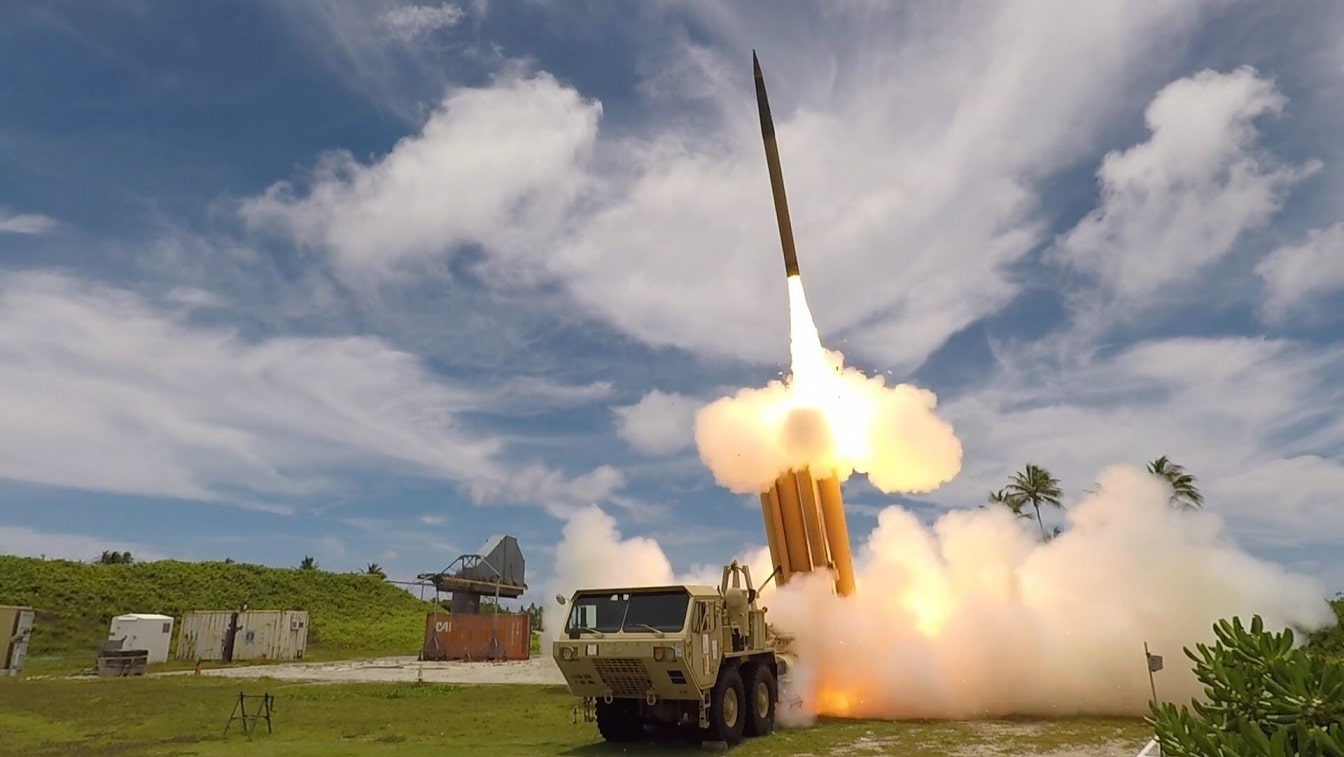THAAD, Explained – Defending against incoming ballistic missiles requires a layered and integrated approach involving surveillance, air attack, and ultimately ground-fired interceptors.
THAAD: Protecting the Base
It is a complex, tactical challenge as forward operating bases, force concentrations, and ammunition and supply depots can all fall victim to ballistic missiles.
Defense is complex because, although missiles typically follow a predictable “parabola-” like trajectory, it can be tough to intercept in time, even if they are seen.
Naturally, the most dangerous ones are those with some kind of precision guidance, something not associated with Iraq’s Scud missiles fired during the Gulf War which helped inspire the creation of THAAD, or Terminal High Altitude Area Defense.
THAAD is a ground-launched missile battery that can target and intercept attacking missiles by tracking the missile’s flight path and shooting a kinetic energy interceptor, which by virtue of its sheer speed and force, can disable or destroy an incoming missile without needing an explosive.
Kinetic Trajectory
It’s called a Hit-to-Kill approach, wherein the force of a collision achieves the desired battlefield effect without using a warhead. THAAD conducts intercepts through what is known as the terminal phase of flight, meaning a portion of an incoming missile’s trajectory wherein it re-enters the earth’s atmosphere or simply descends onto its targets from lower altitudes. Of course, many ballistic missiles’ flight path remains purely within the boundaries of the earth’s atmosphere, certain weapons such as an ICBM descend back into the earth’s atmosphere from space where it transits what’s referred to as the mid-course phase.
The boundary of the earth’s atmosphere is roughly 60 miles above the surface of the earth, so THAAD’s range of 120 miles and a flight ceiling of 93 miles make it optimal for tracking and destroying missiles as they re-enter the earth’s atmosphere from space.
THAAD began in 2008 as an Army program and has since transitioned to the Missile Defense Agency and now defends Israel, Romania, United Arab Emirates, and South Korea.
In more recent years, THAAD developer Lockheed has been engineering a special, upgraded Extended Range (ER) variant of the weapon designed to counter advanced enemy attacks such as hypersonic weapons. A THAAD ER could become effective against a “rudimentary” hypersonic weapon within several years. AviationWeek explained that the Pentagon is also looking at laser weapons and railguns as potential methods of defending against hypersonic attacks.
THAAD and the Hypersonic Threat
Defending hypersonic attacks with an interceptor such as THAAD is likely to prove extremely difficult given the speed with which attacking hypersonics transition from one radar aperture or “field of regard” to another.
In recent years, the Pentagon has been working intensely to try to engineer methods of achieving a “continuous target track” on hypersonic missiles traveling more than five times the speed of sound. For example, the Pentagon and MDA have been working on various satellite networking possibilities through the arrival of Medium-to-Low-Earth Orbit Satellites which can proliferate at lower altitudes to form a “mesh” network of data-sharing nodes in space.
Should the networking be fast enough to establish a continuous track on hypersonic missiles using high-fidelity sensors and high-throughput data transmission, then some kind of intercept of a hypersonic weapon may be possible.
THAAD, however, is unlikely to prove extremely successful as an interceptor unless it is able to establish much greater speed and target tracking technology to keep pace with hypersonic attacks.
MORE: World War III – Where Could It Start?
MORE: A U.S.-China War Over Taiwan Would Be Bloody
Kris Osborn is the Military Affairs Editor of 19FortyFive and President of Warrior Maven – Center for Military Modernization. Osborn previously served at the Pentagon as a Highly Qualified Expert with the Office of the Assistant Secretary of the Army—Acquisition, Logistics & Technology. Osborn has also worked as an anchor and on-air military specialist at national TV networks. He has appeared as a guest military expert on Fox News, MSNBC, The Military Channel, and The History Channel. He also has a Masters Degree in Comparative Literature from Columbia University.

